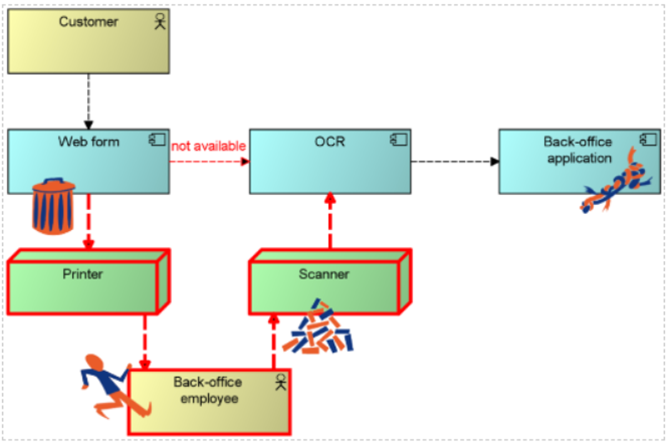Lean & Enterprise Architecture: Seven Deadly Wastes in Enterprise Architectures
In Lean Management, a lot of time is spent finding and eliminating waste. Our processes and organizations are full of waste. In the Lean philosophy these wastes should not be dealt with as ‘problems’, but as opportunities for improvement.
The seven deadly wastes in Lean are:
- Transportation: moving things around;
- Inventory: stock of materials and products;
- Motion: people moving;
- Waiting: people waiting;
- Over-processing: producing more quality or functionality than the customer wants;
- Over-production: producing a higher quantity than the customer needs;
- Defects: Failures in processes and products, leading to rework and waste.
We find these wastes in every organization, even in ‘world-class’ Lean organizations. Lean organizations continuously work on tackling waste and changing for the better (Kaizen). Most of these improvements are small; it is the many small improvements that together lead to strategic improvement. For example: a typical Toyota production plant still implements over 100.000 improvements per year!
Now let’s discuss waste from the perspective of Enterprise Architecture (EA). EA gives us powerful insights into business, IT and infrastructure. What kind of wastes can we typically find in these areas?
Top seven deadly wastes in enterprise architecture:
-
- Transport: Unnecessary transport of information. Instead of providing information on request or using a publish-subscribe model where only interested parties receive the data, many information systems simply post or broadcast everything they think might be of use to someone.
- Unnecessary manual labor: Work that has to be done by people because applications are not interconnected. An example from one of our own clients, an insurance company, which built an online claims form application: They have to print out these forms and then scan and OCR them, because their back-office system was built to receive paper only and no direct connection to the online application could be made (see figure).
 Wasteful architecture: unnecessary manual labor
Wasteful architecture: unnecessary manual labor
- Wasteful architecture: unnecessary manual labor
- Duplicate data: Data which is stored in multiple places, leading to waste of infrastructure, risks of inconsistency and searching.
- Under-utilized knowledge in data: Our data is full of information, which is often not used because we don’t know what the data means. Or worse, we don’t even know which data we have available.
- Unnecessary features: ‘Gold plated’ solutions and functionality that is not used in practice. Just have a look at the menus and ribbons of your average office application…
- Unnecessary checks: Multiple data or process checks, aimed at the same thing. Often, front-end applications perform data entry validation, but the back-ends don’t trust the front-ends and do this validation all over again.
- Complexity: This is our favorite! There is so much complexity in our processes and organizations. Of course EA is all about dealing with this complexity, but in our opinion EA should also be about reducing complexity. Simple solutions give air to agile movement. A crucial capability for organizations these days!
If you learn to see waste, you will recognize it every day. And this is good news! By identifying, visualizing and tackling waste you can work on continuous improvement. If you are an architect, this should, in our opinion, be part of your job.
Next in this blog series: Seven deadly Wastes of Enterprise Architects.
 Wasteful architecture: unnecessary manual labor
Wasteful architecture: unnecessary manual labor